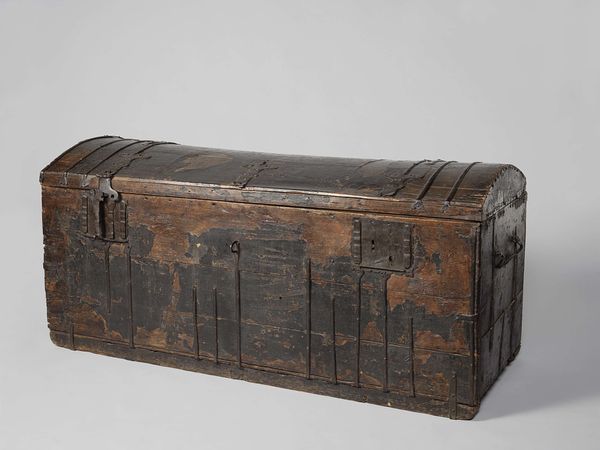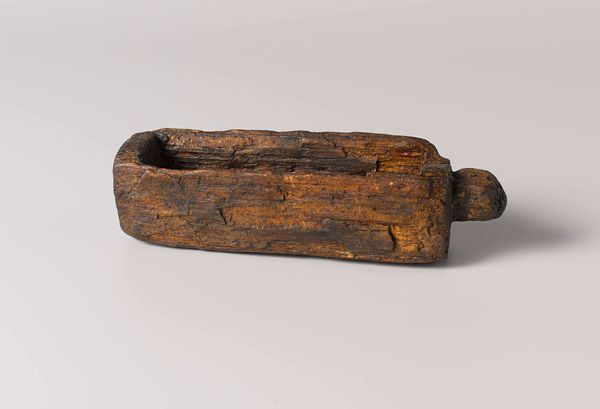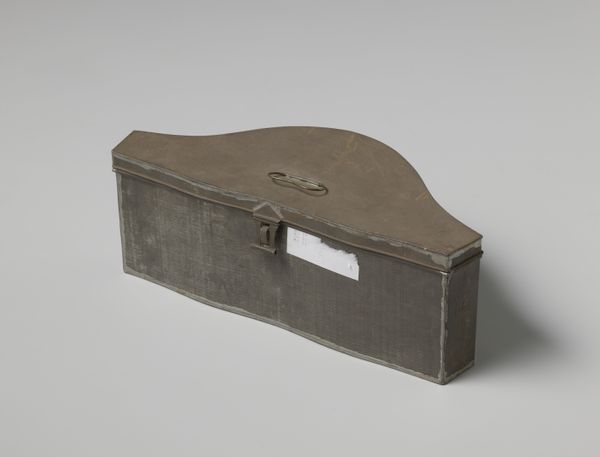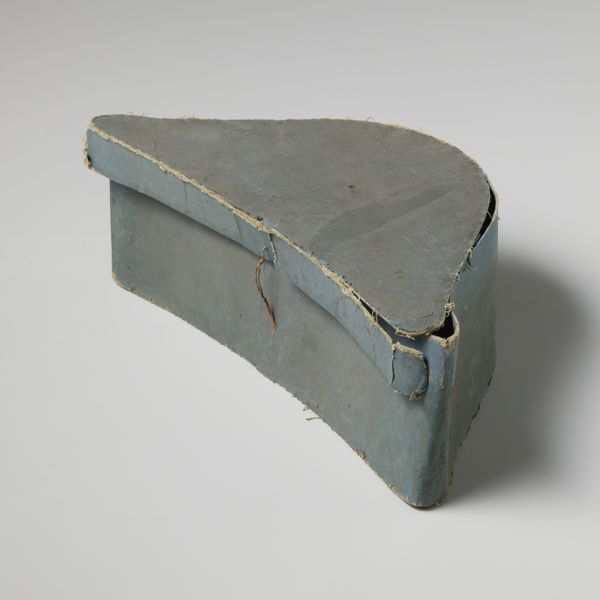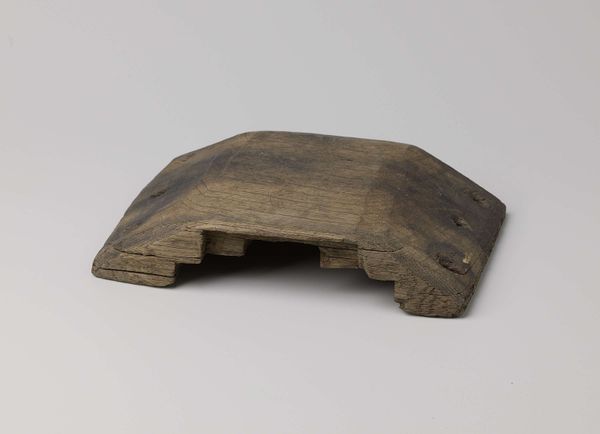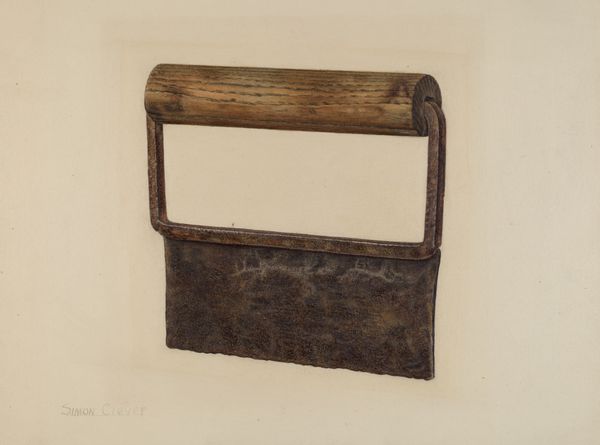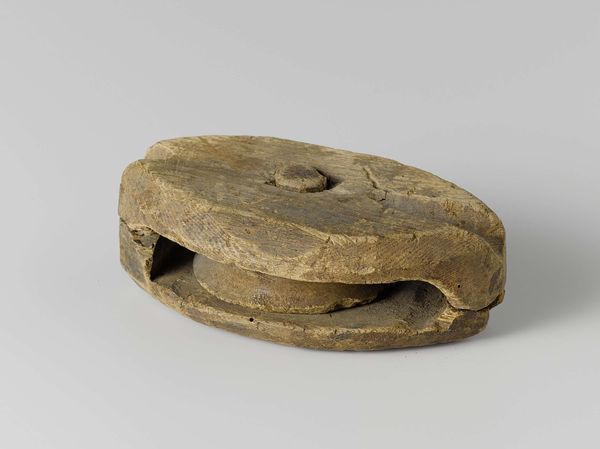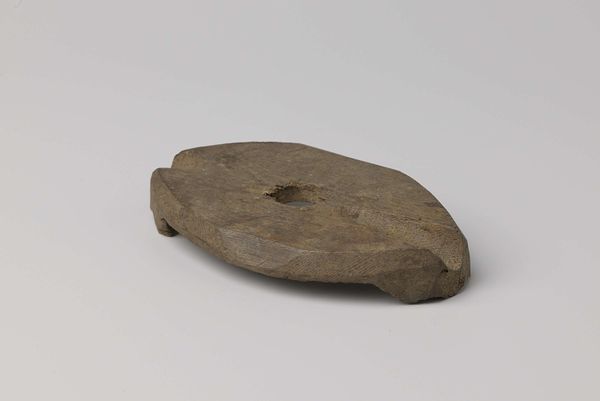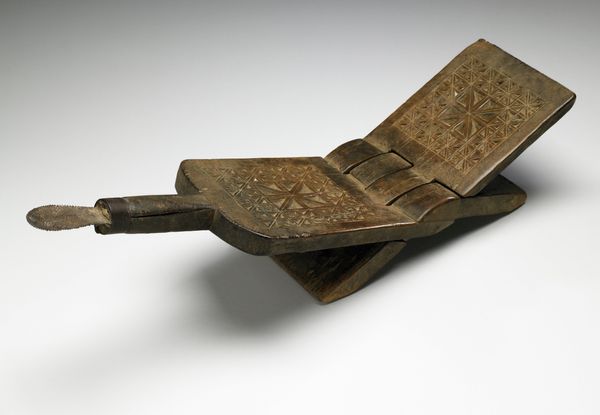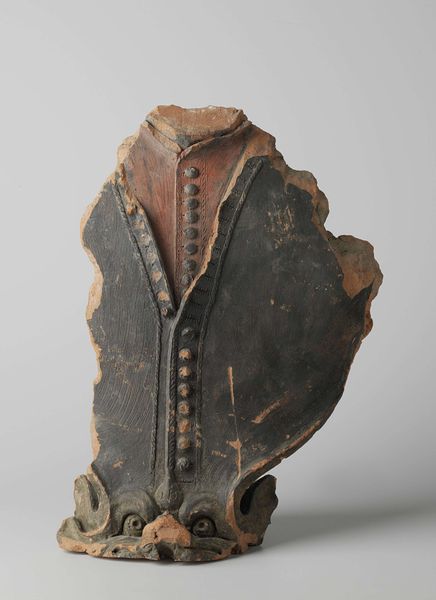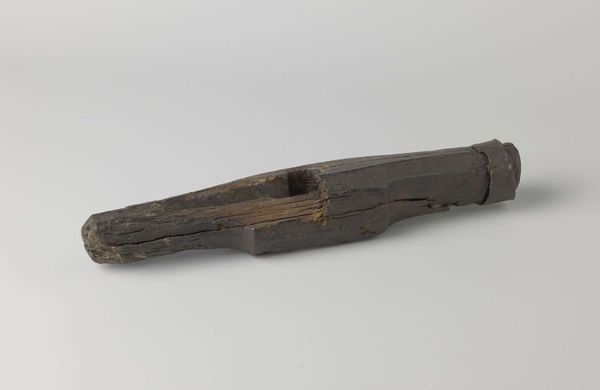
Houten kist voor zilveren staven uit het wrak van de Oost-Indiëvaarder Slot ter Hooghe before 1724
0:00
0:00
anonymous
Rijksmuseum
mixed-media, sculpture, wood
#
mixed-media
#
baroque
#
sculpture
#
sculpture
#
wood
Dimensions: height 37 cm, width 64 cm, depth 27 cm
Copyright: Rijks Museum: Open Domain
This is a wooden chest, made by an anonymous artist, which once held silver bars from the wreck of the Dutch East India ship, the Slot ter Hooghe. As a relic of global trade, this object embodies the complex social and economic structures of the Dutch Golden Age. The East India Company was a powerful institution, backed by the government, with a monopoly on trade routes to Asia. The silver bars inside this chest were intended to be used in exchange for spices and other goods. The shipwreck itself speaks to the risks and human cost of this trade. The chest's weathered appearance serves as a physical reminder of the lives lost and the fortunes sunk in pursuit of global commerce. Understanding the context of this simple box requires archival research into the history of the Dutch East India Company, the accounts of shipwrecks, and the social and economic conditions of the time. The meaning of art is always dependent on its social and institutional context.
Comments
No comments
Be the first to comment and join the conversation on the ultimate creative platform.
